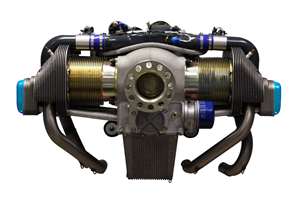If you really wanted to, could a modern day Kitplane be trusted to fly around the world? How about the Epic LT? Sure it could fly around the world, but that is an executive class turbine powered beauty! For this question of flying a Kitplane around the world, I would like to present a recently developed example of sleek efficiency. The aircraft detailed below is a 4 seat low-wing design, built primarily from aluminum, with a turbocharged Rotax 914 forward of the firewall. This same aircraft has just completed a trip around the world....yes indeed, how is that for capability! As you will see, The Airplane Factory out of Eikenhof, South Africa has definitely demonstrated the potential for ignoring limiting beliefs. Let's take a look at this smart new design that has opened many eyes in the Kitplane world - I introduce you to the Sling 4!
Take a look at this great video covering the Sling 4 aircraft launch at Tedderfield Airfield South Africa -
James talking about the EFIS in the Sling 4 -
Here is a final video as the Sling 4 arrives back in South Africa after completion of a round the world trip. The Airplane Factory set a very ambitious goal, to fly their new Sling 4 aircraft around the world, and I feel their accomplishment will be rewarded with great respect - CONGRATULATIONS on a job well done!
Sling 4 Overview and Specs - http://www.airplanefactory.co.za/sling4atw_aircraft.asp
Reference Section -
Factory website for The Aircraft Factory - http://www.airplanefactory.co.za/default.asp
US Sling Aircraft Distributor - http://airplanefactory.com/

















